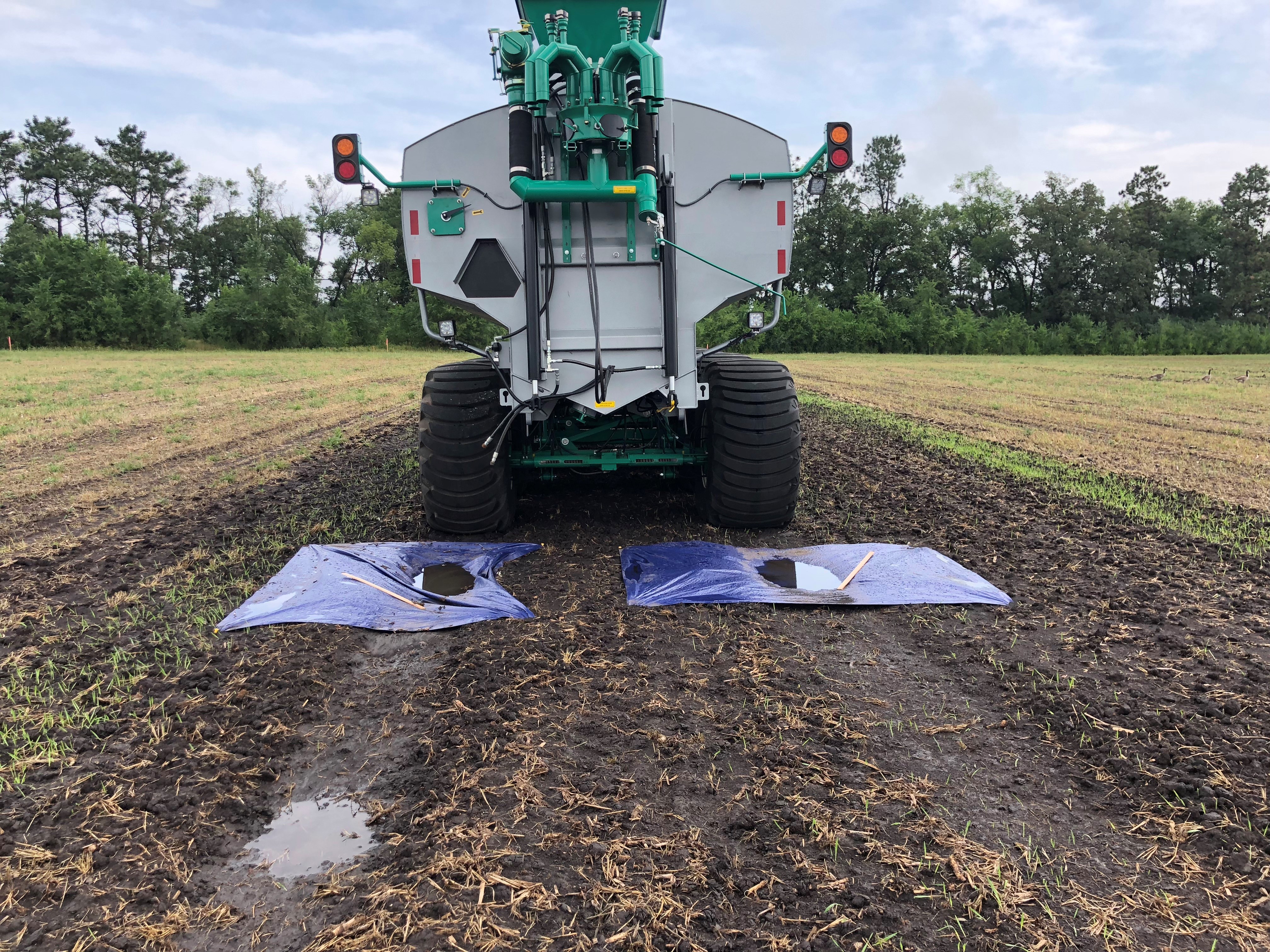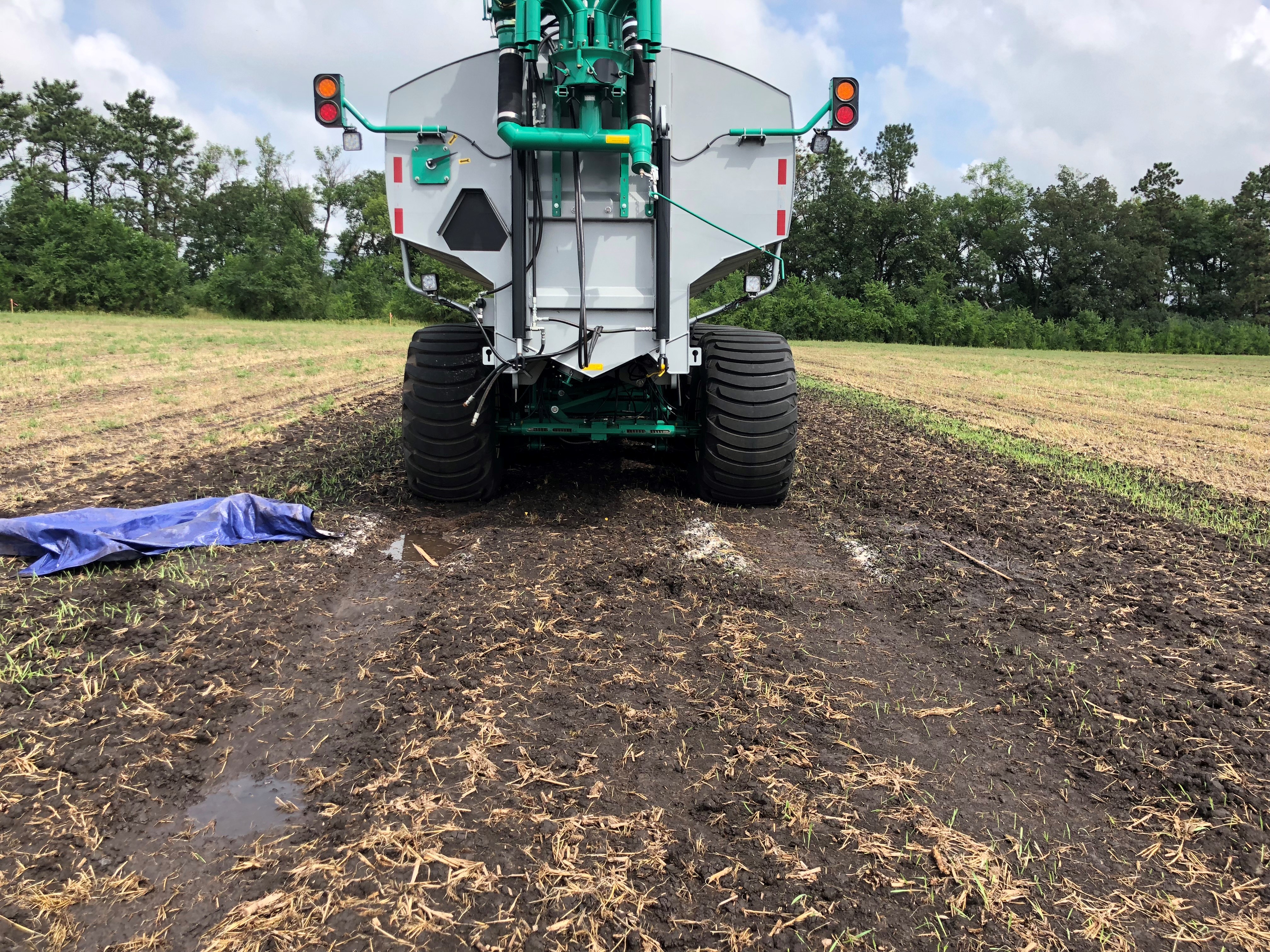Learning an Unplanned Lesson About Tire Inflation
“The best-laid plans of mice and men often go awry.” - Robert Burns
I’ve always liked this quote and can’t help but think of farmers when I hear it. With so many decisions needing to be made throughout the year, even the best-prepared farmers can watch their plans unravel as factors outside of their control—such as tariffs, insects, drought, flood, fuel, labor, and breakdowns—conspire against them. With so many elements that farmers can’t control, it’s important to seek out advantages with the ones they can, such as tires.
I found myself feeling like a farmer at this year’s North American Manure Expo in Brookings, South Dakota, as heavy rains did their best to disrupt my demonstration. My intention was to show the differences in footprint size between a bias and radial tire by rolling a tank provided by Automated Waste Systems, loaded with 10,500 gallons of water, over a section of dry field.

The tank was equipped on one side with bias-ply tires set to an “off-the-shelf” pressure of 45 psi, and radials set to a field-ready pressure of 29 psi on the other. The plan was to outline the footprints made by both the bias and radial tires using flour to show the enormous difference the right tires (and proper pressure) can make when operating a 100,000-pound machine in the field. Well, that was the plan—until the torrential downpours washed away the flour and my demo.
Lucky for me, what the storm left behind was even more impactful. Giant machines, such as the tank we were using for the demonstration, always leave ruts in the field, and what this demo ended up showing is that these ruts are more than merely an eyesore. Visiting the test area the morning after receiving approximately a half-inch of rain overnight revealed water pooled in the rut created by the bias tire, while no water collected where the radial tire had traveled. Hammering home the point, the water stayed pooled in the bias tire’s rut for the two days of the show.

In the end, the inclement weather was a blessing for me because it showed the huge impact that can be made with a small amount of awareness, attention, and expense. Ruts, such as the one created by the bias tire in this demonstration, can not only accelerate erosion but can also prevent water from getting to the roots of your crop, as the pooled water can evaporate before being absorbed by the ground.
Although my best laid plans for a demonstration were washed away, I had the happy accident of Mother Nature doing me a favor and driving my point home for me. Unfortunately, farmers can’t hope for happy accidents and need to seek out every advantage they can get. The simple act of choosing a radial tire over a bias tire—then managing inflation pressure properly—can pay off big dividends down the road for everything from soil health to a farmer’s bottom line.
To learn more about our radial farm tires, our industry-leading line of steel-belted IF/VF tires, and how they can make a difference for your operation, contact your local dealer or rep today.


